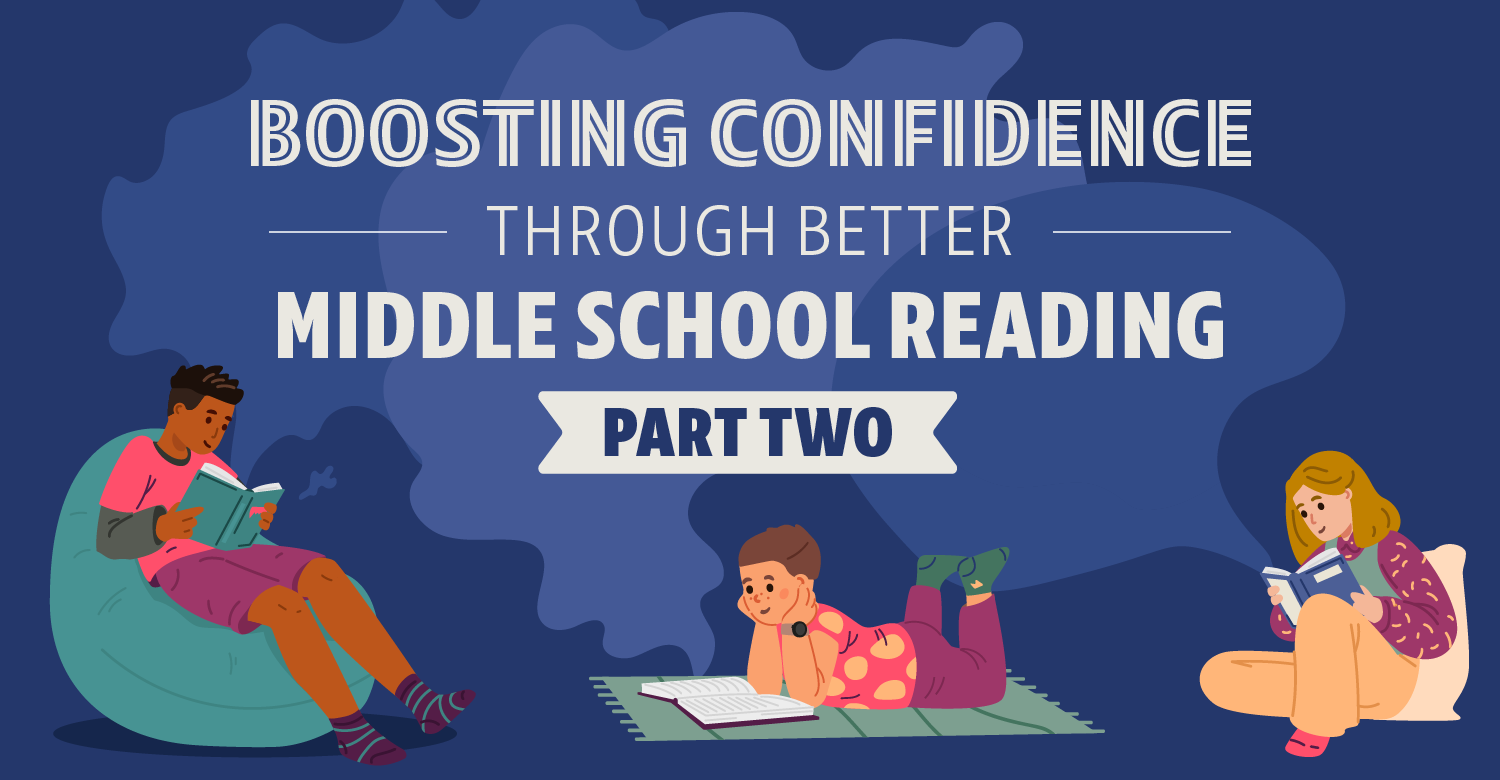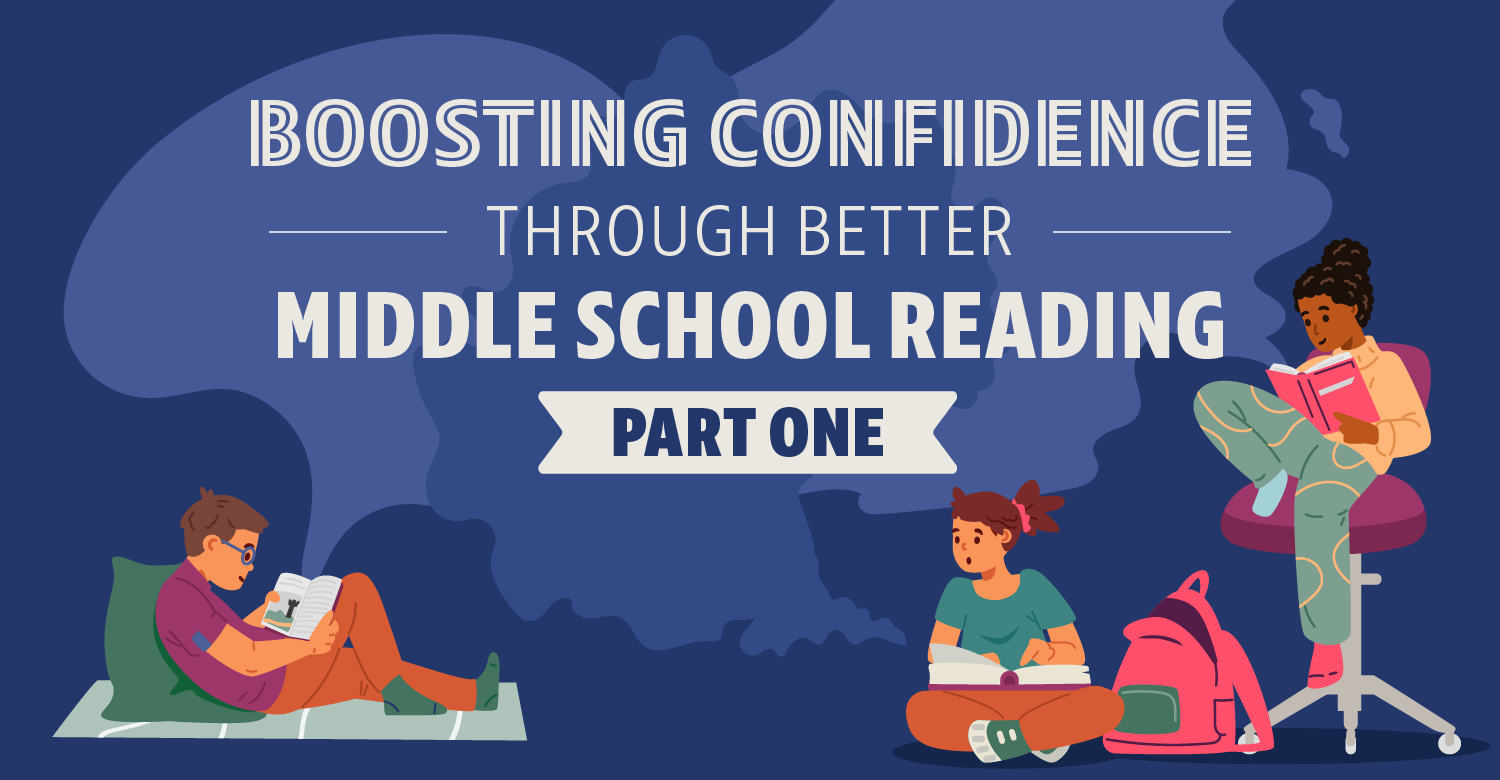Recap! The Middle School of Piedmont in Oklahoma saw that a significant number of their students were below grade level for middle school reading. One of the biggest challenges they faced was just finding time for interventions. To solve this, the school adopted a tiered support approach:
- Tier 1: Grade-level classroom instruction for all students
- Tier 2: Reinvented advisory time, i.e., PAWS (Positive Attitude + Work = Success)
- Tier 3: Reading Success class—a unique approach to reading success
This blog is the second part in a two-part series written by Brenda Davis. To see part one, where Brenda reviewed Piedmont’s steps for Tier 1 and 2 solutions, click here.
Step 3: Create a unique reading class for struggling students
At the Middle School of Piedmont in Oklahoma, the students struggling the most with grade-level literacy were enrolled in a dedicated Reading Success class. While there are plenty of other middle schools that have special reading classes, Piedmont’s Reading Success class stands out for its innovative structure. The class was a brand-new addition designed to function more like an elementary school setup, focusing on small groups engaged in:
- Targeted instruction
- Skill practice
- Reinforcement in centers or stations
The purpose of the class was clear: to provide interventions tailored to each student and skill to close learning gaps effectively.
How to diagnose reading gaps using data-driven assessment
The first step toward closing the middle school reading literacy gap at Piedmont was understanding the problem. A PLC team—including teachers, administrators and a reading specialist—analyzed standardized test data along with the results of each student’s reading screener to identify students struggling with foundational skills.
Team decisions regarding placement into the newly established Reading Success class were made on a case-by-case (or student-by-student) basis. Once the group was identified, the Reading Success teacher conducted diagnostic assessments that pinpointed each student’s needs. For example, some students had mastered basic decoding but needed fluency and vocabulary support. Others were struggling with basic comprehension. With this data, the Reading Success teacher grouped students based on specific needs, ensuring interventions were personalized and targeted.
Here’s how it worked:
- Group instruction: Both the teacher and the assistant led small intervention groups, ensuring personalized support.
- Station rotations: Students rotated through various stations during the 45-minute class period, staying engaged in meaningful and skill-specific activities.
- Student ownership: Students actively tracked and reflected on their own progress, fostering self-awareness and accountability.
- Teacher monitoring: The teacher monitored progress weekly to ensure the interventions were impactful.
This structured yet dynamic approach ensured every minute of the class was maximized, keeping students engaged in the “right work” to accelerate their reading skills.
The nuts, bolts, and makeup of the Reading Success class
Piedmont made a strategic investment by hiring both a highly qualified teacher and a skilled teacher assistant to enhance student learning in their unique reading class.
The lead teacher, an experienced seventh-grade English language arts (ELA) educator, had already built strong relationships with students and colleagues, earning a reputation as the kind of teacher who inspires and connects. With prior experience teaching first grade, she also brought a deep understanding of early literacy development and structured learning through center-based instruction.
The teacher assistant was another excellent addition to the team. Naturally skilled at working with middle school students, she had strong ties to the community as a district parent. Together, they formed a dynamic instructional team.
Collaboration was at the heart of the program. The Reading Success teacher and ELA teachers shared a common planning period, allowing them to meet weekly for collaborative team discussions about the middle school reading gap. In addition, they maintained ongoing informal communication about shared students, ensuring instructional alignment and support. The ELA instructional coach played a crucial role in this partnership, further strengthening the team’s ability to drive student success.
Can “not a normal class” be a good thing?
Being assigned to an additional reading class in middle school isn’t something most students would celebrate. However, we recognize that for interventions to be truly effective, they must be required rather than optional and take place during the school day—not before or after school. Fortunately, the middle school’s flexible structure made this possible. Students in the Reading Success program still had two electives, and the model allowed them to return to all three electives based on their progress with monthly reading assessments.
But how could Piedmont make this class a place where struggling readers wanted to be?
First, it had to look and feel different—more than just an extension of students’ regular classes. It needed a wow factor. So the school designed the space with flexible seating, including bean bags and wobble stools, modular group desks (but only a few), a vibrant rug, a cozy library corner with contemporary mobile shelving, and two horseshoe-shaped teacher tables—an uncommon feature in many middle school classrooms.
The class library was intentionally stocked with high-interest, low-readability (hi-lo) books to engage struggling readers in independent reading, a core component of the class. Another deliberate choice was to minimize or even eliminate technology use, as students already interacted with screens throughout much of their school day.
Remember Charlie, the eighth-grader we talked about in part one of this blog? He was struggling with middle school reading and he was enrolled in the Reading Success class at Piedmont. From Charlie’s perspective, this was “not a normal class.”
He explained, “It’s different and fun. There are beanbags and we move around, and it’s not just sitting at desks.”
More importantly, Charlie recognized that his reading was improving—and that progress was carrying over into his other classes.
The important role of frequent assessment in flexible learning
A defining feature of the Reading Success class was its flexibility—students stayed as long as needed to develop essential skills before transitioning back to their regular schedule. To support this fluid structure, frequent assessment was key.
Students were initially identified using the Istation screener and continued with monthly assessments to monitor progress. Upon entering the Reading Success class, they completed a comprehensive diagnostic evaluation covering phonics, fluency, and comprehension. This provided teachers with detailed insights into each student’s specific reading challenges.
Learning was continuously measured through teacher-developed formative assessments, ensuring strategies and materials were adjusted to meet individual needs. This personalized approach not only bridged literacy gaps in middle school reading but also boosted student confidence, preparing them for success in the general classroom. By prioritizing assessment-driven instruction and targeted support, the program created a strong foundation for lasting literacy growth.
Students who exited the Reading Success program continued to be assessed monthly to ensure they maintained appropriate progress, and classroom teachers and the Reading Success teacher would collaborate regularly to monitor student performance and respond quickly if any signs of struggle emerged.

Further results
- Several students requested to remain in the class, despite making the necessary gains, because they recognized that they were making progress and felt they needed continued support to consolidate.
- Initially, there were a small number of parents who were hesitant about their child being in the class, but after talking with the principal, they understood that this was a valuable opportunity for their child to improve overall reading success.
Addressing middle school literacy gaps
Charlie’s story reflects the challenges faced by countless middle school students nationwide—struggling readers who have been left behind by traditional instructional approaches. The implications are clear: without targeted interventions, these students risk falling further behind, impacting their success across all subjects and into adulthood.
The Reading Success program at Piedmont Middle School demonstrates that it is possible to close literacy gaps at the middle school level. By prioritizing assessment-driven instruction, leveraging professional learning communities, and creating an engaging and supportive learning environment, Piedmont has developed a model that not only improves middle school reading skills but also builds student confidence.
The success of the program underscores a crucial message: literacy is not just the responsibility of elementary educators—it must be a priority at every level of education. Schools must break down barriers to intervention, rethink how time and resources are allocated, and foster a culture where struggling readers receive the support they need without stigma or hesitation.
If you, like the students at Piedmont, are still hungry for more reading instruction, dive into these three hand-picked blogs on literacy!
About the educator
Brenda Davis is originally from New Zealand and currently resides in Oklahoma City. As an educator, Brenda is committed to educational equity for all students and has served in Title 1, urban, high poverty, and high multilingual learner (ML) populations for the past 21 years.






